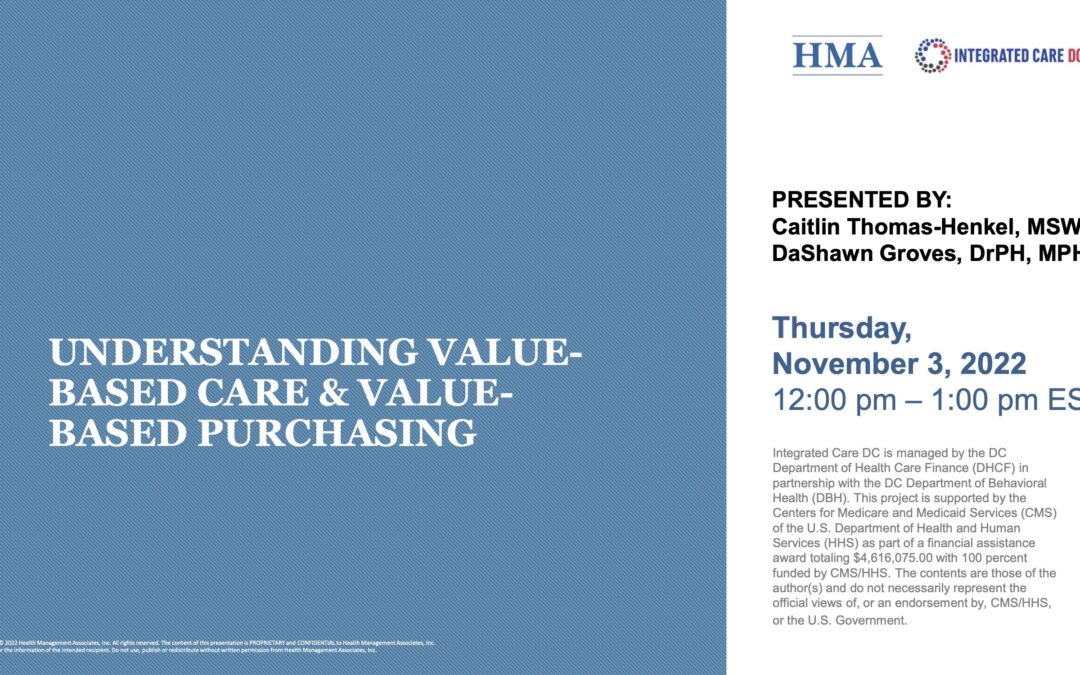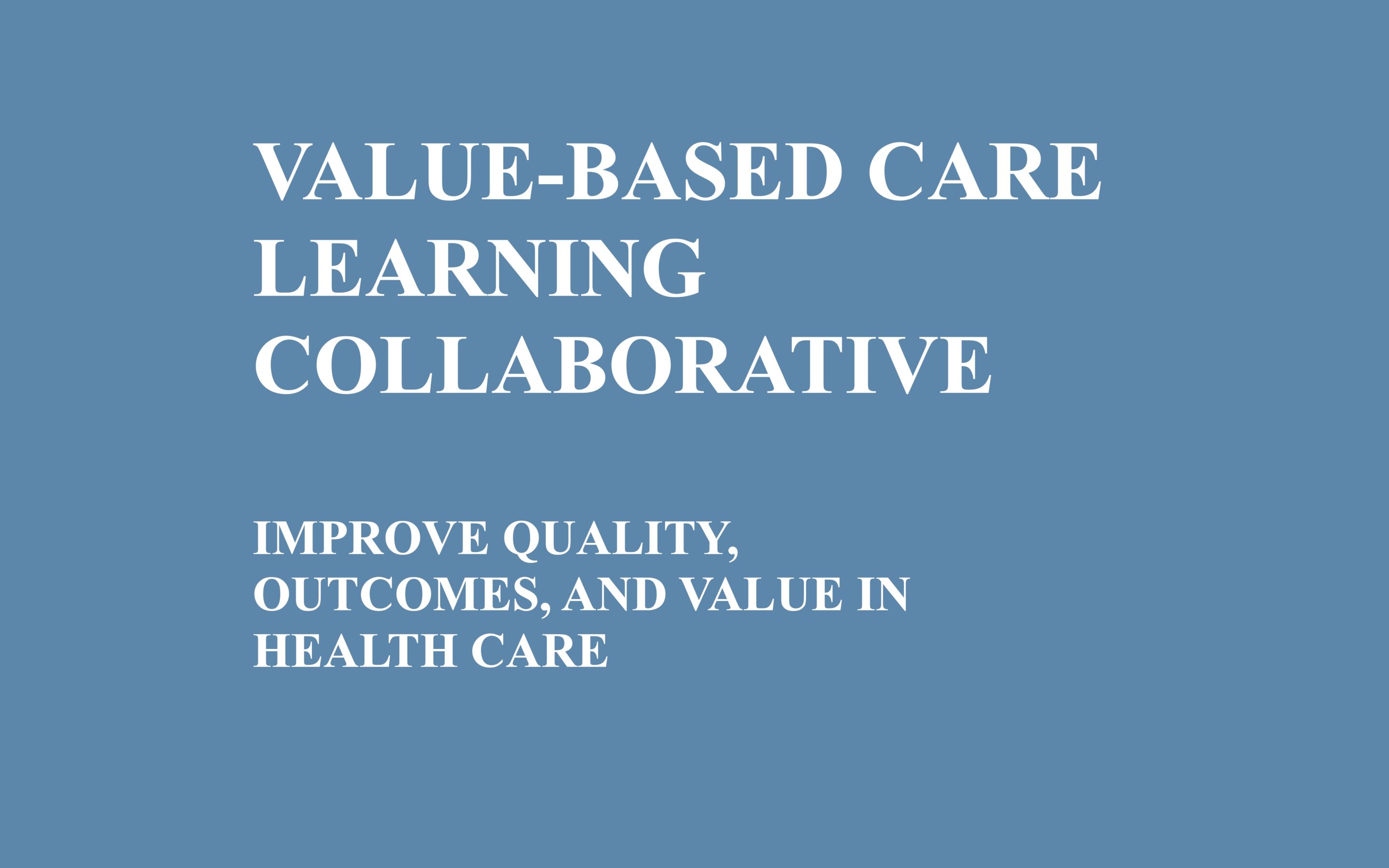

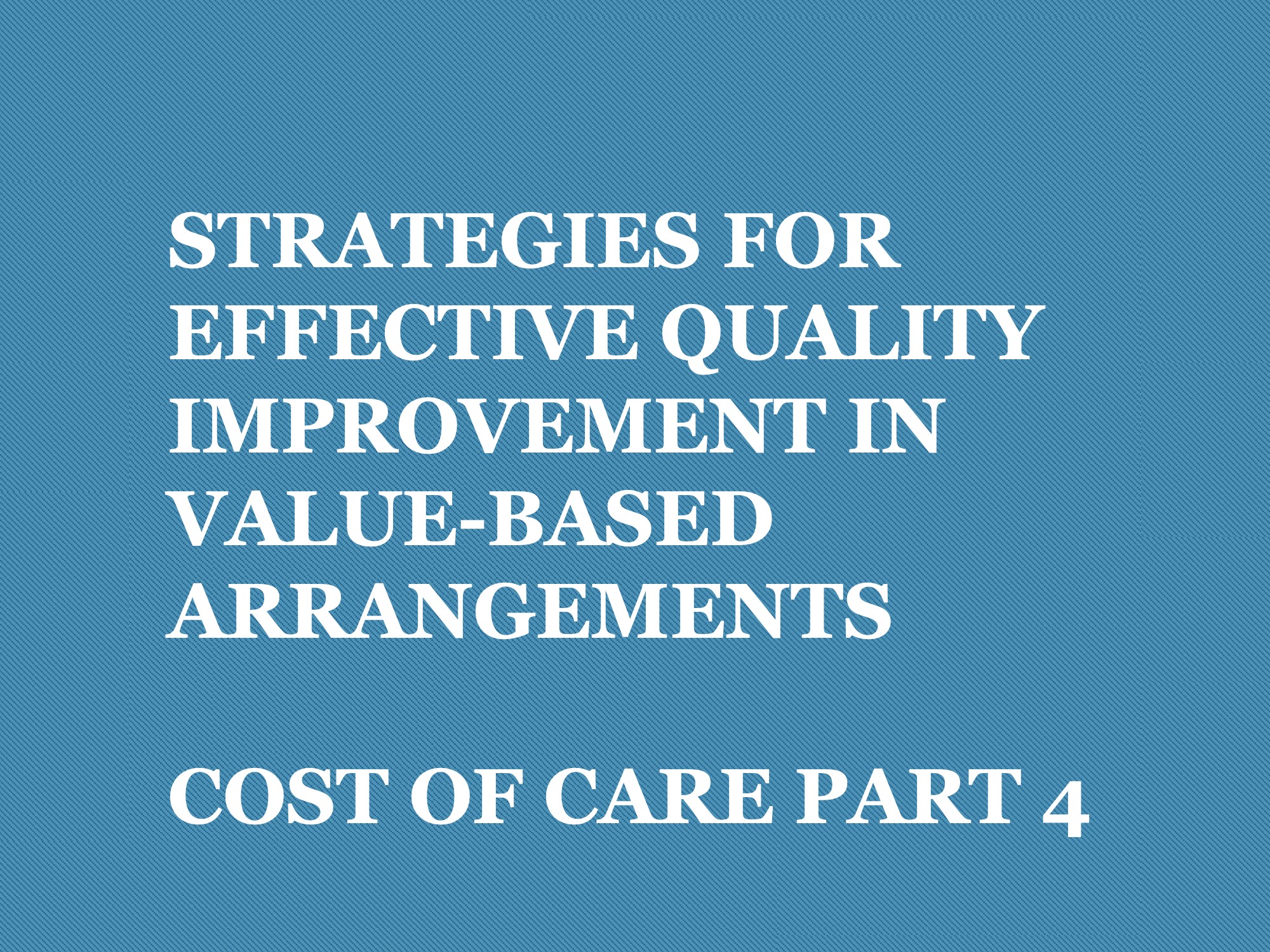
Strategies For Effective Quality Improvement In Value Based Arrangements – Cost of Care Part 4
Description: This webinar explores the critical connection between the cost of healthcare services and quality outcomes. Attendees gained the skills to identify a set of meaningful metrics to monitor that inform strategic opportunities to elevate the quality of care...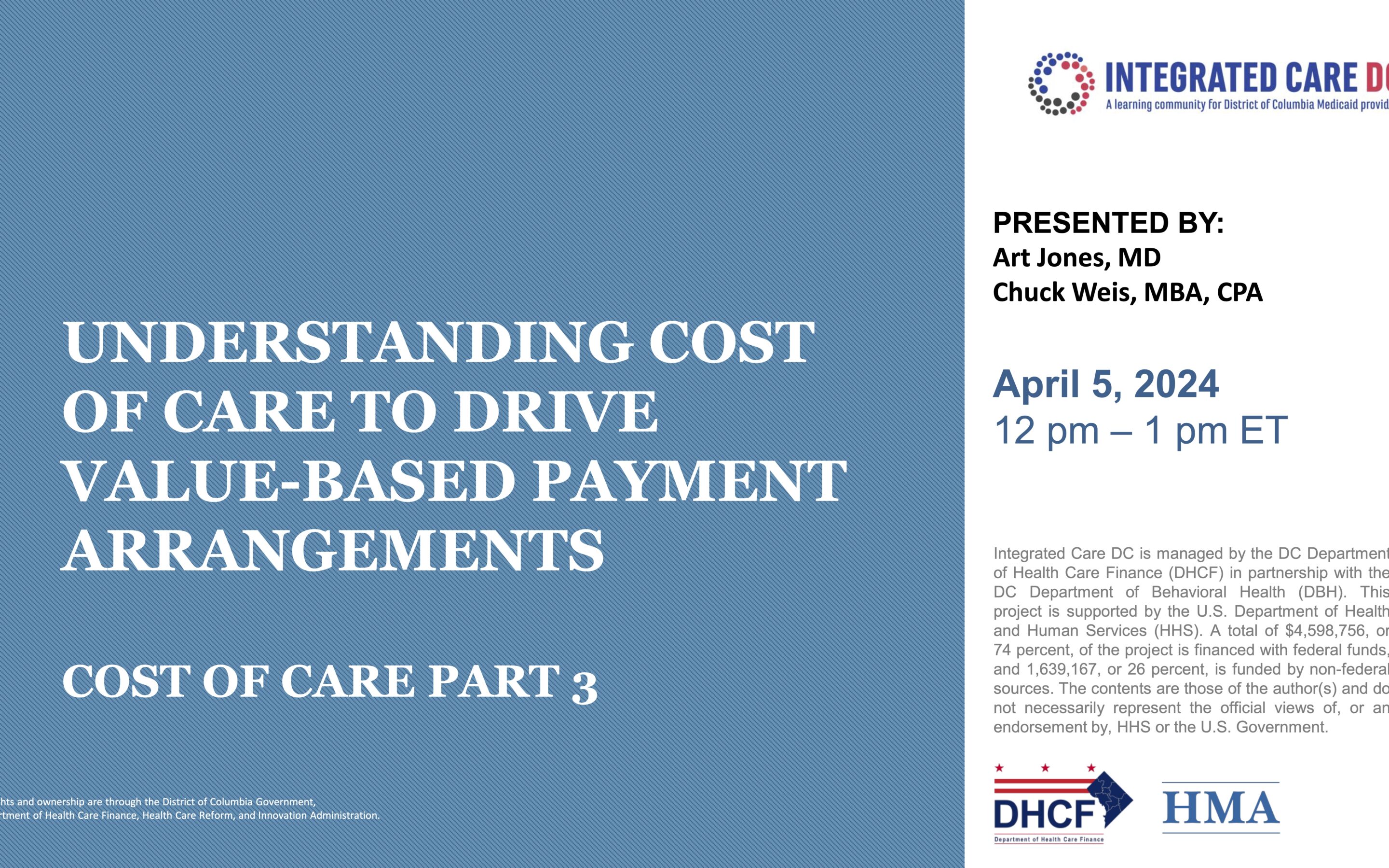
Understanding Cost of Care to Drive Value-Based Payment Arrangements – Cost of Care Part 3
Description: It is important for healthcare providers to understand the cost of the services they provide and compare that to reimbursement rates. In value-based care arrangements, they should also anticipate the impact of their care models on patient outcomes and...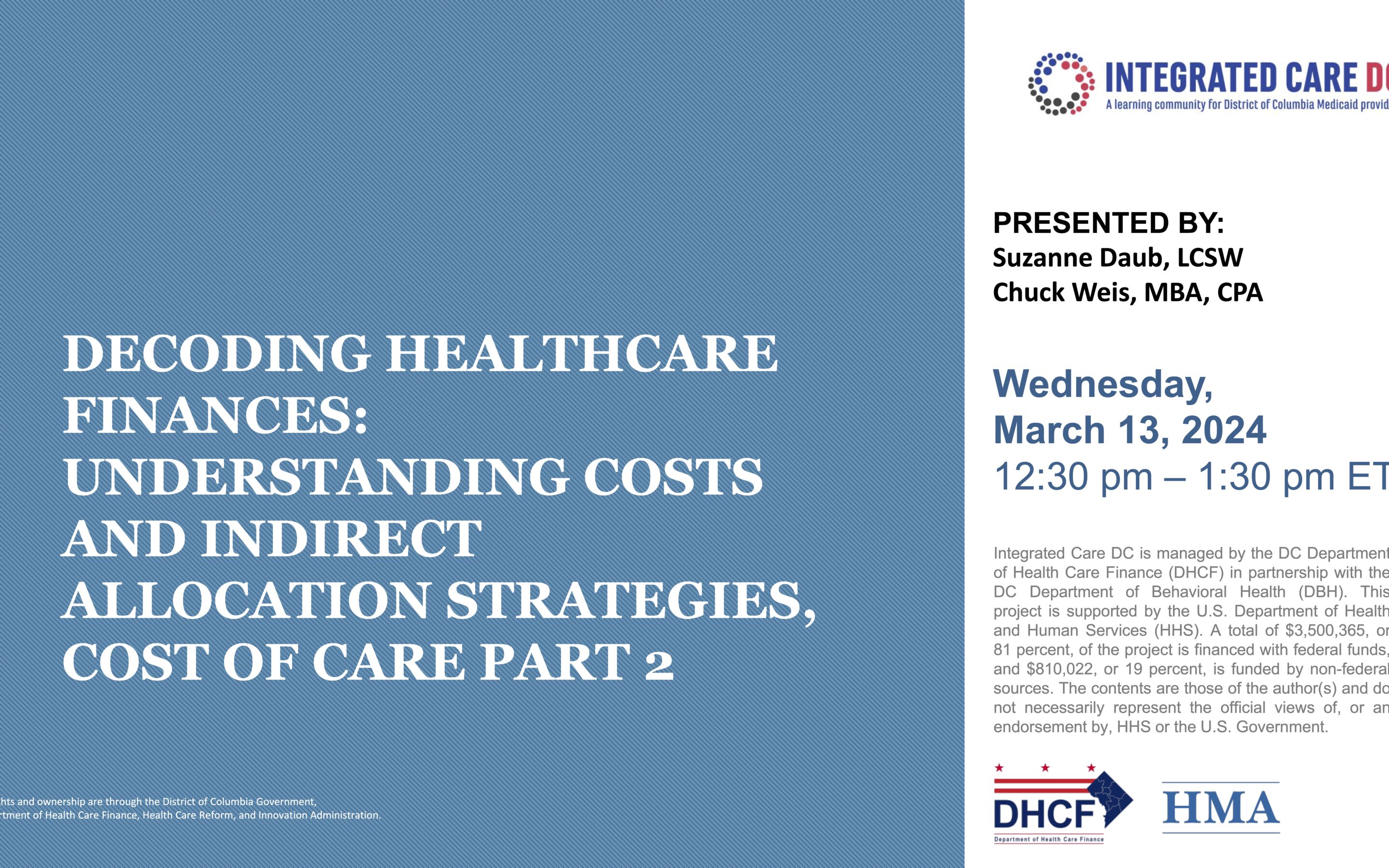
Decoding Healthcare Finances Understanding Costs And Indirect Allocation Strategies Cost of Care Part 2
Description: With the District of Columbia’s movement to a reimbursement system with services defined and paid through a procedure code, health care leadership must understand the costs that are directly provided and those that indirectly support the...
Supporting Practice Leaders Navigating Unfamiliar Waters – Leadership Through Change Part 1
Practice leaders face more decisions than ever as the District of Columbia works to build an integrated health system that delivers whole person care. This learning series is designed to help organizational decision makers better manage change within a dynamic health system. Part 1 will introduce ways that leadership can transform ingrained policies and practices using new information, data points, and approaches to improve care access and outcomes. The session will also preview exciting next steps for the learning series moving into 2024.
Determining Cost of Provider Care – A Useful Business Management Tool – Cost of Care Part 1
Measuring the cost of providing services is critical for making informed business decisions. With the updated District of Columbia Medicaid Fee Schedule moving reimbursement of procedure codes for key behavioral health services from a per-occurrence basis to codes allowing reimbursement based on the amount of time spent providing these services, health care leadership must understand the costs that directly and indirectly support service delivery. This learning session will provide key decision makers, financial analysts, and practice management staff with an understanding of how to determine cost of care and how to compare cost of care with reimbursement rates to inform decision making.
Developing Your Value Based Payment (VBP) Value Proposition
In the dynamic landscape of healthcare, crafting a compelling value proposition involves a strategic blend of audience understanding, innovation, and responsiveness to the needs of payers, community partners and other stakeholders. This short take describes the steps to creating a strong value proposition.
VBP 101 (Teaching to the Tools) – VBP Foundations Part 5
The transition to Value-Based Payment (VBP) represents a multifaceted process, encompassing significant system-level adjustments in healthcare delivery and reimbursement. Effectively implementing these changes requires a methodical and developmental approach. To facilitate this transition, a comprehensive toolkit has been designed, empowering healthcare providers to evaluate their existing readiness and access resources essential for enhancing their capabilities to operate within a value-based payment framework. In this webinar, we will introduce providers to this invaluable toolkit and guide them on how to navigate it seamlessly.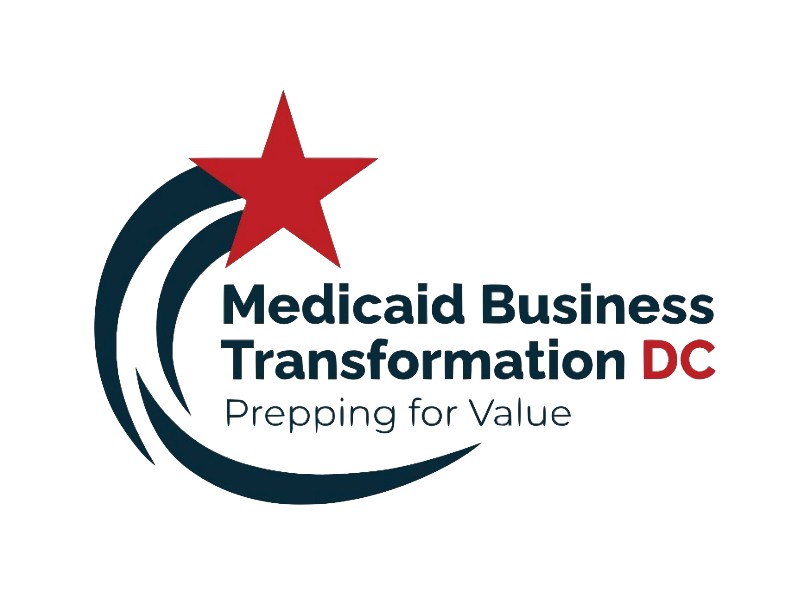
Value-Based Payment (VBP) Virtual Learning Collaborative
Transitioning to payment models that support value-based care means doing business differently. Many District healthcare providers are requesting assistance preparing for and implementing this important change. This virtual learning collaborative focused on legal agreements, contracting, and financial topics, including revenue cycle management and assessing risk. Presenters shared scenarios, assessments, and tools to advance capacity and understanding.
How to Negotiate Your Share with Payers
This short take video will outline the elements of shared savings contract and where the “share” fits in. It will outline some of the key considerations to think about when trying to negotiate your share of savings with a payer for a value-based contract (including downside risk v. upside potential, contract structure, and other value-based care funding), as well as touch on internal considerations for providers when negotiating a share of savings (i.e. is the share enough to cover the provider’s investment to perform in the contract).
VBP Medicaid Managed Care Term Sheet
This tool helps FQHCs understand all of the various VBC elements that are encompassed in a model or program and can impact performance and hence are important consideration in the contract analysis. It provides the considerations, but also guidance on how to approach them and what may be favorable or unfavorable terms within a contract, depending on the scenario and LAN category.
Understanding Your Population
Description: This resource emphasizes the importance of understanding a patient population for successful VBP and provides a foundational understanding of the key considerations in population assessment.Download the Tool
Technology Infrastructure to Support VBP
Description: This resource serves as a gap assessment for providers and a roadmap for the needed infrastructure to succeed in advanced value-based models. As providers transition from value-based payment models centered around quality performance to models with...
Succeeding in Advanced Alternative Payment Models
Description: This resource describes the competencies that providers must systematically master to thrive within each Health Care Payment Learning Action Network (LAN) category. At the very least, all alternative payment models (APMs) necessitate providers to achieve...
Quality Measurement for Behavioral Health Providers
Description: This resource serves as a comprehensive guide, offering a step-by-step process for the creation of an integrated and comprehensive quality strategy. The strategy’s core components are thoroughly examined, encompassing population health outcomes and...
Promoting Value-Based Purchasing to the Behavioral Health Workforce
This resource is designed to assist leaders in introducing and educating staff about value-based payment (VBP) and value-based care, with a strong emphasis on leadership’s unwavering commitment to the program’s success. Achieving success in VBP arrangements hinges on garnering the full commitment of your workforce and ensuring their continuous participation in VBP activities. The materials provided offer valuable techniques for actively engaging your workforce in the development, implementation, and diligent monitoring of the VBP program.
Forming Strategic Partnership Agreements and Care Compacts
Description: This resource introduces an initial approach for creating accountable and outcome-driven partnerships spanning the network of healthcare and community-based providers, all geared towards enabling comprehensive, whole-person care. The central focus is on...
Developing Your Value-Based Payment Value Proposition
This resource covers the development of a value proposition, a compelling statement or proposition that outlines the unique benefits and value that a healthcare provider or organization offers to payers, service recipients, and other stakeholders. A well-crafted value proposition helps healthcare providers and organizations communicate their unique strengths and advantages to payers and patients, ultimately driving engagement, partnerships, and success in value-based payment models.
Creating a VBP Presentation for Payers
Description: This resource outlines key considerations for demonstrating your VBP Plan through a presentation to a payer.Download the Tool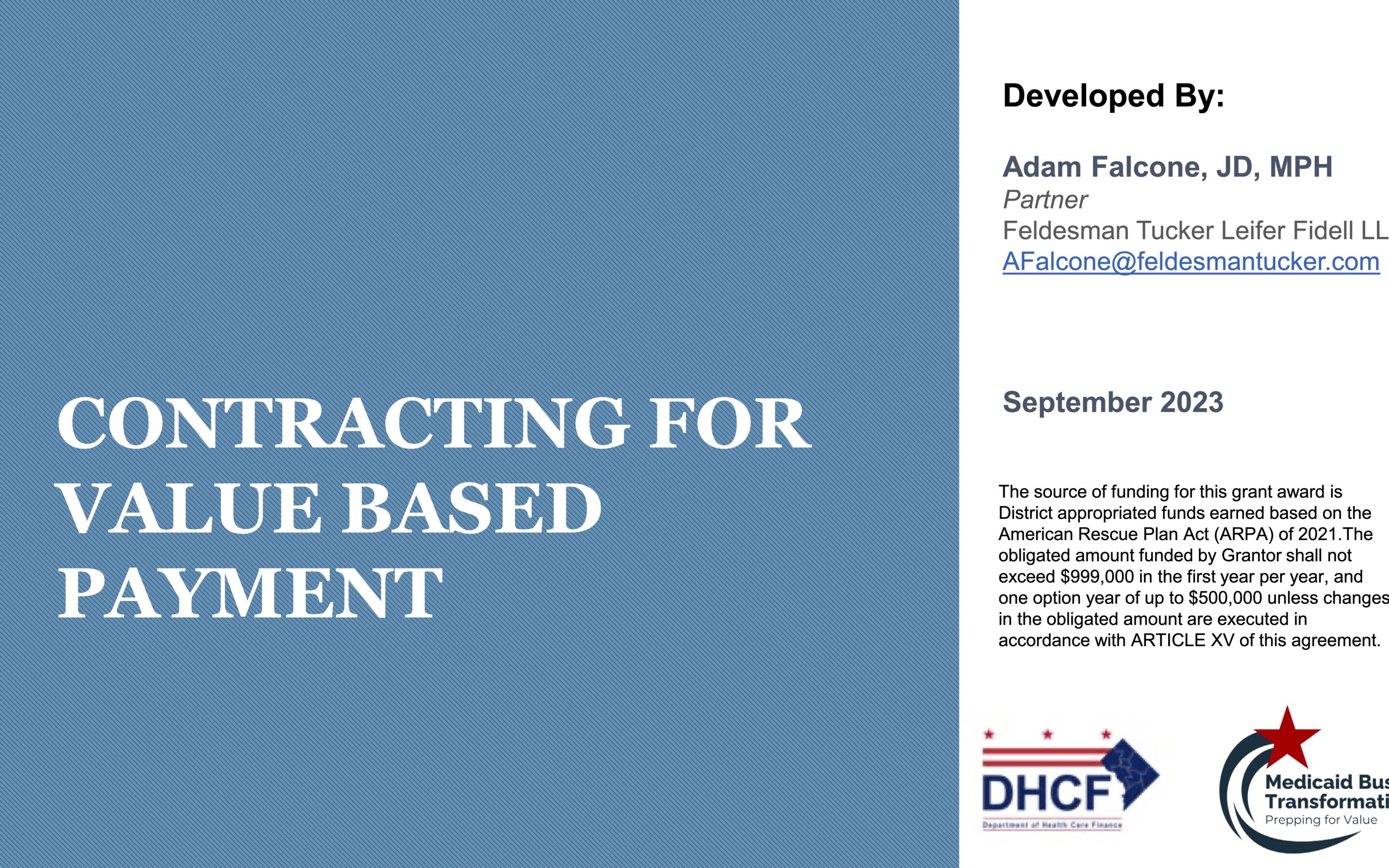
Contracting for Value-Based Payment
This resource provides contracting tools to support value-based payment arrangements, beginning with a description of the components of legally enforceable contracts and the legal terms generally found in such contracts. The materials describe key legal considerations for arrangements between providers, which will assist providers in identifying and navigating potential legal issues. Recommendations are offered on how to address legal risks through the purchase of insurance, managing contracts throughout the contracting lifecycle, and negotiating contracts with other organizations.Building a Positive Payer-Provider Partnership
Description: This resource provides strategies for cultivating a strong relationship with a Managed Care Organization (MCO) when entering into a value-based purchasing agreement. It provides insights into what the payer values and pinpoints measurable outcomes that...
Achieving Total Cost of Care
Description: This resource assists providers in understanding the transition from value-based arrangements, which were previously constructed solely on the achievement of quality metrics, to models now grounded in the total cost of care. It furnishes providers with a...
Risk Mitigation and Risk Reserves
https://www.integratedcaredc.com/wp-content/uploads/2023/09/Risk-Mitigation-and-Risk-Reserves.mp4 Description: Once health care providers have demonstrated the ability to reach quality performance targets and generate surplus in a shared savings pool, they may...
Accountable Care Organization (ACO) Fundamentals
A basic overview of the structure and function of Accountable Care Organizations (ACO) as well as an exploration of their challenges and opportunities in advancing value based care contracts with the government and private payers.
Value-Based Payment: Is it disrupting health care for the better? Role of a Capitated Alternative Payment Model – FQHC Part 2
This webinar will focus on the “why” of transitioning from fee-for-service to capitation to pay for community health center direct services. Dr. Jones will discuss how fee-for-service reimbursement limits patient access to care and hampers efforts to improve patient self-management and accountability for their own health. He will share examples of how innovators are using lessons learned from other service industries to disrupt the health care market. Participants will learn how moving away from the fee-for-service system can preserve revenue streams but also support new models of care, and how payment reform can help to address primary care workforce shortages.
Understanding Key Terms in Managed Care Contracts – VBP Legal Training Part 2
Managed care contracts, like many legal contracts, are challenging to understand. This session will provide a roadmap to key terms commonly found in managed care contracts. The session will explain what these terms mean in plain language and offer examples of favorable and unfavorable terms. In addition, the session will offer pointers for evaluating the favorability of contract terms and describe potential changes to standard terms that participants may wish to address during negotiations.
Health Care Provider Checklist for Entering into Managed Care Contracts
This is a self-assessment tool intended to help health care providers plan for negotiations around proposed managed care contracts. The tool can be used for internal conversations to analyze key terms, develop strategic direction, and set priorities for approaching negotiations. This tool can help providers determine if they are ready to contract, what level of risk they can tolerate, and what areas to focus on in negotiations.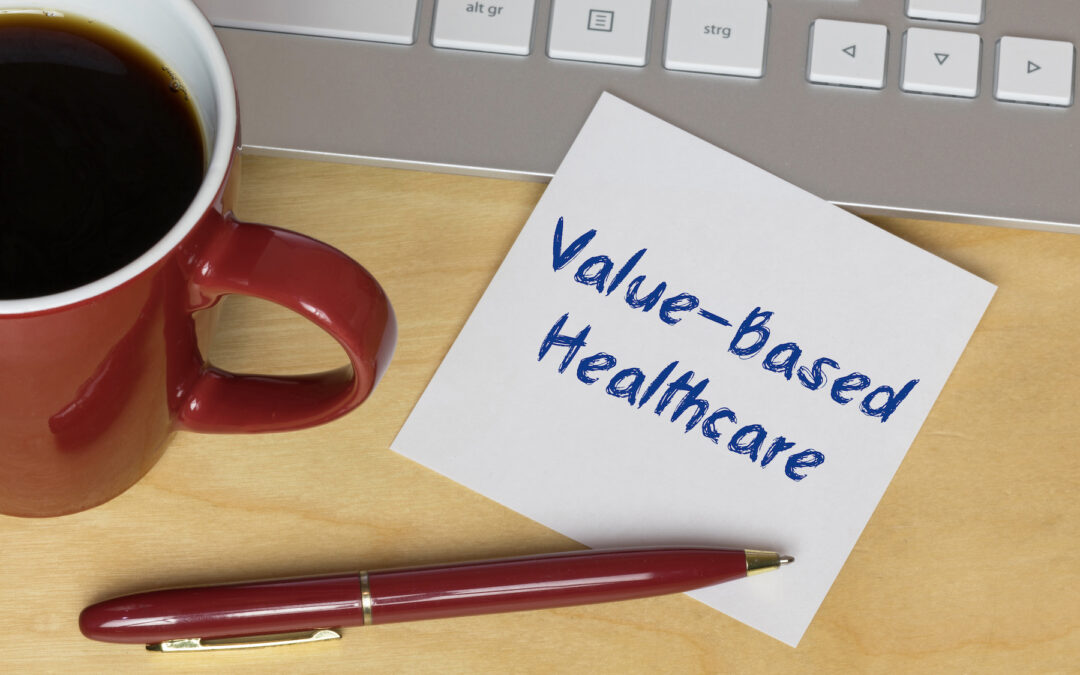
Promise and Perils of Value Based Purchasing VBP – Behavioral Health VBP Part 1
Value is a function of impact and cost. BH providers provide a very high-impact, relatively low-cost service. As such, payment methodologies that reward value should be an opportunity for them to increase their revenue. But that's a theory that only plays out in practice sometimes. Come learn what BH providers need to do to be successful in a value-based environment.
Value-Based Purchasing 101: The “Basics” – VBP Foundations Part 1
An introduction to the basic concepts, structures, models, and mechanics of value-based payments.
Clinically Integrated Networks: Build, Buy or Stay on the Sidelines – FQHC Part 1
CMS has signaled its intent to move from strict fee-for-service reimbursement to value-based payment for Medicaid as it has been actively doing for Medicare over the past decade. A few FQHCs are pursuing advanced alternative payment models on their own but most are choosing to clinically integrate with others, especially other FQHCs. This session will share national experiences from these initiatives and provide a framework for evaluating strategic options for DC FQHCs to progress in their pursuit of advanced alternative payment models.
Strategies for Negotiating Managed Care Contracts – VBP Legal Training Part 1
This is a self-assessment tool intended to help healthcare providers plan for negotiations around proposed managed care contracts. The tool can be used for internal conversations to analyze key terms, develop strategic direction, and set priorities for approaching negotiations. This tool can help providers determine if they are ready to contract, what level of risk they can tolerate, and what areas to focus on in negotiations.
Integrated Care DC Managed Care Readiness Workshop
View materials from this event hosted by Department of Health Care Finance, DBH Training Institute, & Integrated Care DC on May 9, 2023. The in-person workshop was designed for behavioral health providers and other organizations seeking to prepare for the integration of behavioral health into the District’s Medicaid Managed Care Program. Presenters shared information and facilitated exercises to help leadership, clinical and operational staff, and other stakeholders develop the organizational competencies needed to succeed in managed care, including an understanding of managed care principles, how to communicate effectively with managed care partners, and how to effectively demonstrate the value of care through quality measurement and population health.
Treatment Planning (Quality & Population Health Series, Part 2)
We often think of the treatment plan as a document to complete. However, it can be a tool to engage and empower the person served in their own recovery process. In this interactive webinar we will learn the core components of the treatment planning process from a person-centered and engagement-focused lens.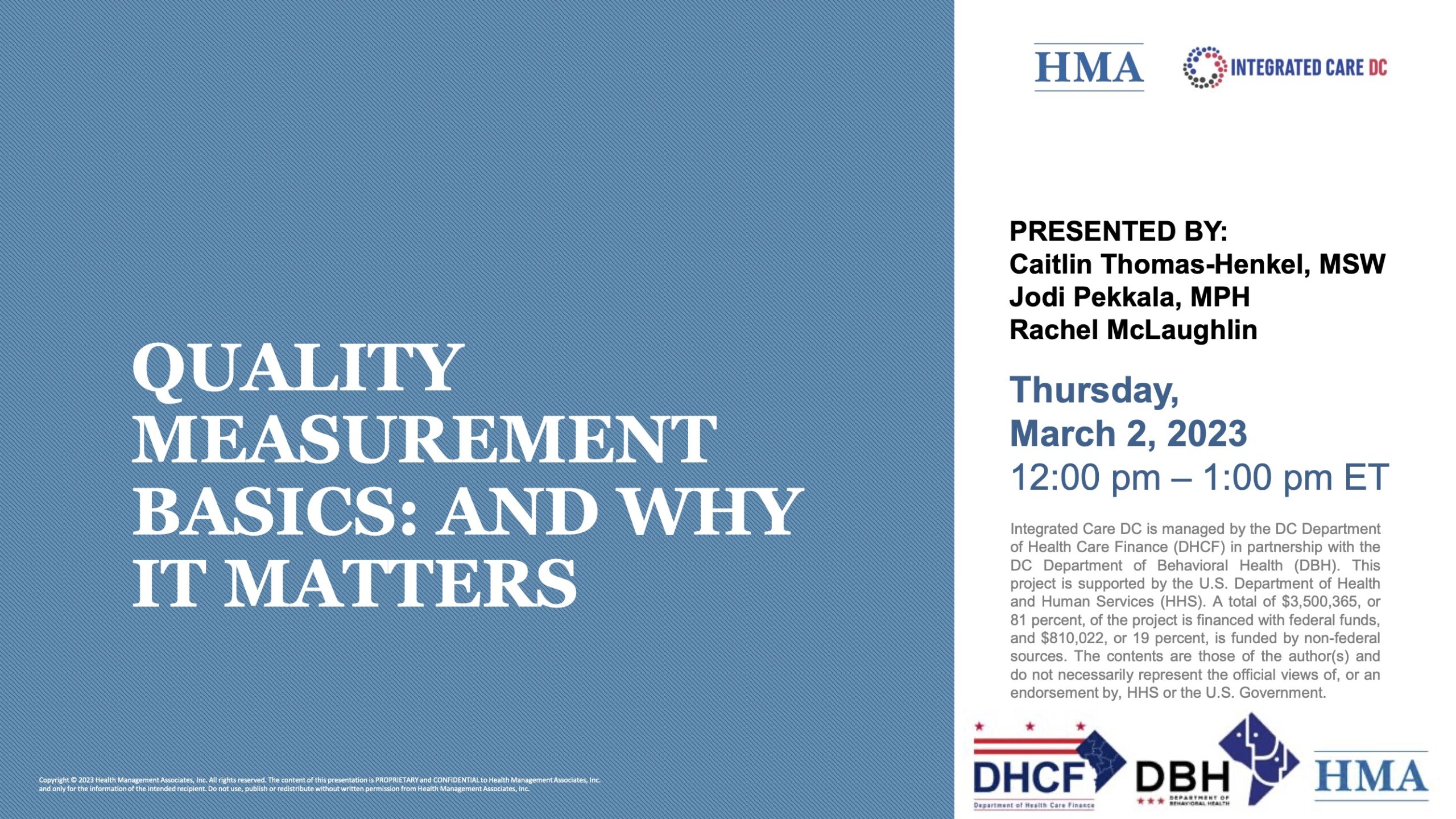
Quality Measurement Basics: And Why it Matters (Quality & Population Health Series, Part 1)
Understanding, measuring, working to improve quality performance are critical to ensuring that patients have positive outcomes and providers are satisfied—they’re also critical to ensure your practice is meeting its regulatory requirements and maximizing payment opportunities. As the District of Columbia carves in behavioral health care to managed care arrangements and requires more providers to be in value-based care arrangements, it is even more imperative that quality measurement and improvement is understood and infused across your organization—from providers, to leaders, to auxiliary staff. This two-part series will describe the quality measurement basics and why it matters, and then treatment planning for population health. In Part 1, we will explore why we need to infuse a culture of quality within healthcare organizations, including an understanding of what we value, who we serve, and who we are accountable to. Presenters will emphasize the importance of all staff understanding quality and its impact on our patients, staff and organization. We will review the basics of measurement and key measures in quality focused on integrated care.Is a 20-minute consultation realistic? (PCBH Series Part 8)
In making the transition from practicing outpatient behavioral health to primary care behavioral health, clinicians often wonder, how can I do my work in 20 minutes, and is it really possible to make a meaningful difference in this amount of time? This training answers this question directly by simulating a 20 minute behavioral health consultation and discussing as a group each stage of the encounter, best practices, and the strengths and challenges that arise.Sustainable Trauma Treatment: How Accelerated Resolution Therapy can be Utilized in a PCBH Setting to Effectively Treat Trauma (PCBH Part 7)
Evidence-based modalities developed to treat trauma are commonplace in outpatient behavioral health practices, but we often struggle to adapt these therapies to the integrated care setting where brief intervention is common. In this session, we will present Accelerated Resolution Therapy (ART) as a useful tool for treating trauma in an integrated setting. Accelerated Resolution Therapy has been shown to achieve benefits rapidly, usually within 1-5 sessions, and is effective in treating PTSD and complex trauma as well as other mental health problems such as anxiety, depression, phobias, grief, chronic pain, and relationship issues. We will explore the basics of Accelerated Resolution Therapy, highlight examples of how it has been used effectively in the primary care setting, and discuss both benefits and barriers to implementing this modality. We will focus on the compatibility of this therapy as a brief intervention within the PCBH model and the particular benefit of sustainability as Accelerated Resolution Therapy reduces exposure to vicarious trauma – critical to clinician self-care and preservation in these trying times.Allowing Data to Tell a Story: Relevant Metrics to Help Reflect the Infinite Values of Integrated Healthcare (PCBH Part 6)
As healthcare centers around the country further embrace data and metrics, integrated primary care behavioral health programs must incorporate data to reflect the value of work being done. In this webinar, attendees will learn about primary data and metric points and the importance of ensuring that data tells a story and reflects the infinite values of health systems, rather than becoming finite goals.
Achieving Better Outcomes Through Value-Based Care & Population Health Strategies (LAN Framework Part 2)
During this webinar, presenters discussed how proactive approaches to value-based care, including the use of VBP models, can improve individual and population health outcomes while enhancing efficiencies and reducing total costs. We also featured AmeriHealth’s new care coordination dashboard focused on helping providers close care gaps and achieve better patient outcomes.Behavioral Health Consultation: Handling Behavioral Health Emergencies in Primary Care (PCBH Part 5)
Managing emergencies is challenging in a high-volume, fast-paced environment. This webinar addresses the ways that BHCs and the primary care team can effectively and efficiently address emergencies.Viewing Time 60 Minutes
